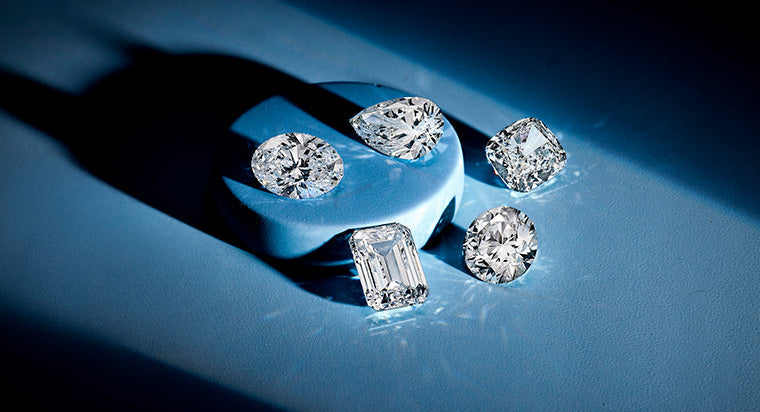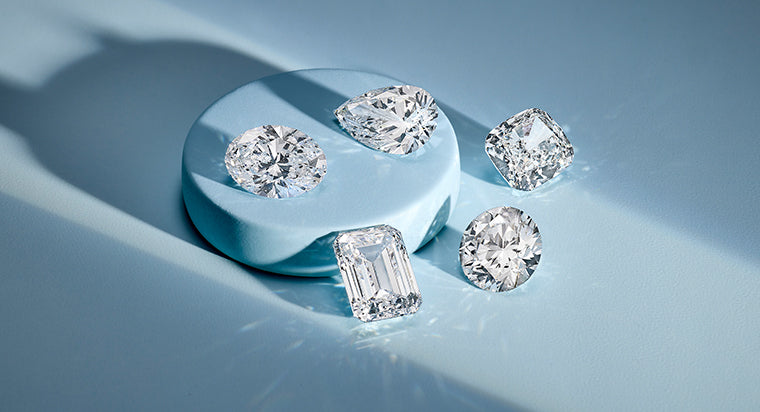Lab Diamond Bracelets vs. Traditional Diamond Bracelets: Which Is Right for You?

As you shop for jewelry, you'll see two types of diamonds: lab and traditional. Lab diamonds are created in a controlled environment, while traditional diamonds are mined from the earth. While both diamonds have the same chemical and physical properties, lab diamonds come with some bonus benefits. We'll compare lab and traditional diamonds so you can determine which is right for your diamond bracelet.
TABLE OF CONTENTS
Sustainable Considerations
Lab grown diamonds have more eco-friendly production processes that don't impact the environment as much as diamond mining. Traditional diamond mining has some environmental concerns, including disrupting ecosystems and the earth. Lab diamonds don't use as many natural resources or impact ecosystems, so they're viewed as a more sustainable option.
Cost Comparison
Lab diamond bracelets are generally more affordable than their traditional diamond counterparts due to the differences in how the stones are sourced. Lab diamonds are created in controlled environments using advanced technology, significantly reducing the time, labor, and resources required to produce them compared to mining natural diamonds. The mining process involves extensive labor, machinery, and geographical limitations that drive up costs. Lab diamonds also bypass the supply chain complexities associated with mined diamonds, which results in lower prices because that savings gets passed along to you. Despite the cost savings, lab diamonds offer the same visual appeal, durability, and quality as traditional diamonds, making them an attractive, budget-friendly option for bracelets.
Quality and Appearance
Traditional and lab diamonds are graded using the same standards (color, clarity, cut, and carat weight). These determine the diamond's quality as well as its price. Traditional and lab diamonds have the same sparkle, durability, and brilliance - they're visually indistinguishable to the naked eye. Both lab and traditional diamonds are 10 out of 10 on the Mohs hardness scale, which makes them highly durable.
Customization and Availability
Lab diamond bracelets have plenty of customization options because there are more stone and style options. Lab-made diamonds can be manufactured on demand, so you can be more selective about the quality and get the stones you want - they offer more freedom with availability. You're at the mercy of what diamonds are found on the earth with traditional diamonds, so they're more limited, and you don't have as many options.
No matter your style of jewelry, you can find an appealing diamond bracelet. Here are some diamond bracelet designs:
- Tennis Bracelets: Tennis bracelets feature a continuous row of diamonds set in metal, offering a sleek and sophisticated look. It's a timeless, elegant bracelet style that's versatile and suitable for both casual and formal occasions.
- Bangle Bracelets: You'll see bangles in a variety of styles, and some of these rigid bracelets feature diamonds along the outside. They're perfect for stacking or wearing alone and provide a modern, bold statement.
- Cuff Bracelets: Typically wider than bangles, cuff bracelets feature diamonds to create a striking, bold appearance. They can be open where they slide onto the wrist or closed with a clasp. Cuffs catch the eye and make a statement.
- Charm Bracelets: Charm bracelets allow for personalization. Some pick charms with meaning, while others choose a complete bracelet with curated charms. Some charms feature diamonds, while other styles have gemstones throughout the bracelet.
Longevity and Value
Not only are lab diamonds gorgeous but they're also built to last for years. Both types of diamonds are durable so they have longevity. Diamond bracelets can easily become heirloom pieces.
The perceived value between lab diamonds and natural diamonds often centers on rarity and tradition. Natural diamonds are considered more valuable due to their geological origins and the notion of scarcity. The rarity of traditional diamonds has been repeated to consumers for decades. This perception impacts resale value, so natural diamonds generally retain more value in the secondary market. Lab diamonds, while visually identical and more affordable, tend to have lower resale value because they can be produced on demand, so they lack the same rarity appeal. However, as consumer preferences shift toward sustainability, the perceived value of lab diamonds is increasing rapidly.
Personal Values and Preferences
When choosing a diamond bracelet, it's essential to think about your personal values and preferences. Do you prioritize sustainability? That makes lab diamonds a more appealing option for you. Or do you find the traditional allure of mined diamonds more attractive? Then natural diamonds with their and rarity will be more meaningful for you. Cost may also be a factor—lab created diamonds offer the same beauty and quality at a more accessible price. In the end, your decision should align with what resonates most with you, whether that's contributing to a more eco-conscious future, embracing tradition, or finding a balance between both. Your stunning bracelet should reflect your style and also your values.
Conclusion
When choosing between lab and traditional diamonds for bracelets, consider sustainability, cost, and personal values. Lab diamonds are eco-friendly and more affordable, created in controlled environments with the same visual appeal and durability as mined diamonds. Traditional diamonds are valued for their rarity, but lab diamonds offer more customization options due to availability. More men and women are choosing lab diamond bracelets because of their sustainability and affordability. If you're curious about lab diamonds and have questions, reach out to experts at With Clarity. They'll answer your questions and show you some of the lab diamond bracelet options from which you can choose.









